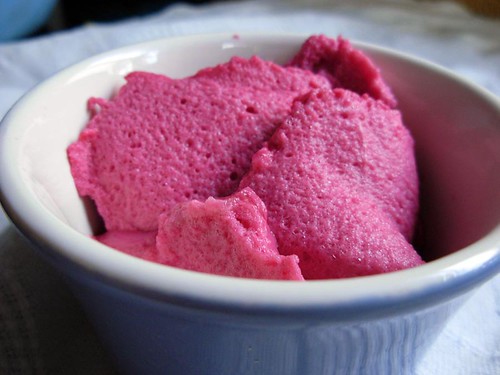A fascinating piece by Kathryn McGowan about the industrial changes that gave rise (HAR) to the modern birthday cake.
Before the invention of roller mills (about 1870) flour was made using grind stones resulting in flour that contained some of the bran and all of the germ of the wheat. To get white flour the miller then had to sift or boult the flour through a succession of cloths of differing weaves which filtered out the bran and the germ. The oil that comes out of the germ during milling stayed in the flour giving it a gray-ish yellow color. The presence of that oil shortened the shelf-life of white flour to about six months after which it would go rancid. All of these limitations meant that white flour was expensive and used only by the wealthy or for special occasions.
When flour is ground using rollers, the grain passes through two rollers moving at different speeds the slower one holds it and the faster one strips it. Scraping off the germ before grinding meant that no germ or germ oil got into the flour. And so was created the first truly white flour, ground solely from the endosperm of the wheat. It was a snowy white and due to the lack of wheat germ and wheat germ oil, it had double the shelf life of the old style “white” flour. The new technology made it much less expensive and the longer shelf-life meant that it could be shipped all over the country. Everyone could have white flour.
The other invention important to those towering, sugar-laden birthday treats is baking powder. It was Initially created in England in 1843. The first American manufacturers were Evan Norton Horsford and George F. Wilson who founded the Rumford Chemical Works in Providence, Rhode Island in 1857. Before chemical leavening, cakes had to be raised with the power of eggs alone, which requires a lot of elbow grease with a whisk (remember, no stand mixers in the 19th Century), and speed to get it into the oven before it begins to collapse. It took an expert baker with lots of skill to make a fluffy, high angel food cake. Baking powder changes all of this, anyone could just add some to their recipe and poof, a cake as light as a cloud.
She also makes a “birthday cakes” recipe from 1870 and goes on a search for candied caraway seeds. I could have done with more SCIENCE! and less BAKING, but still.


 From
From